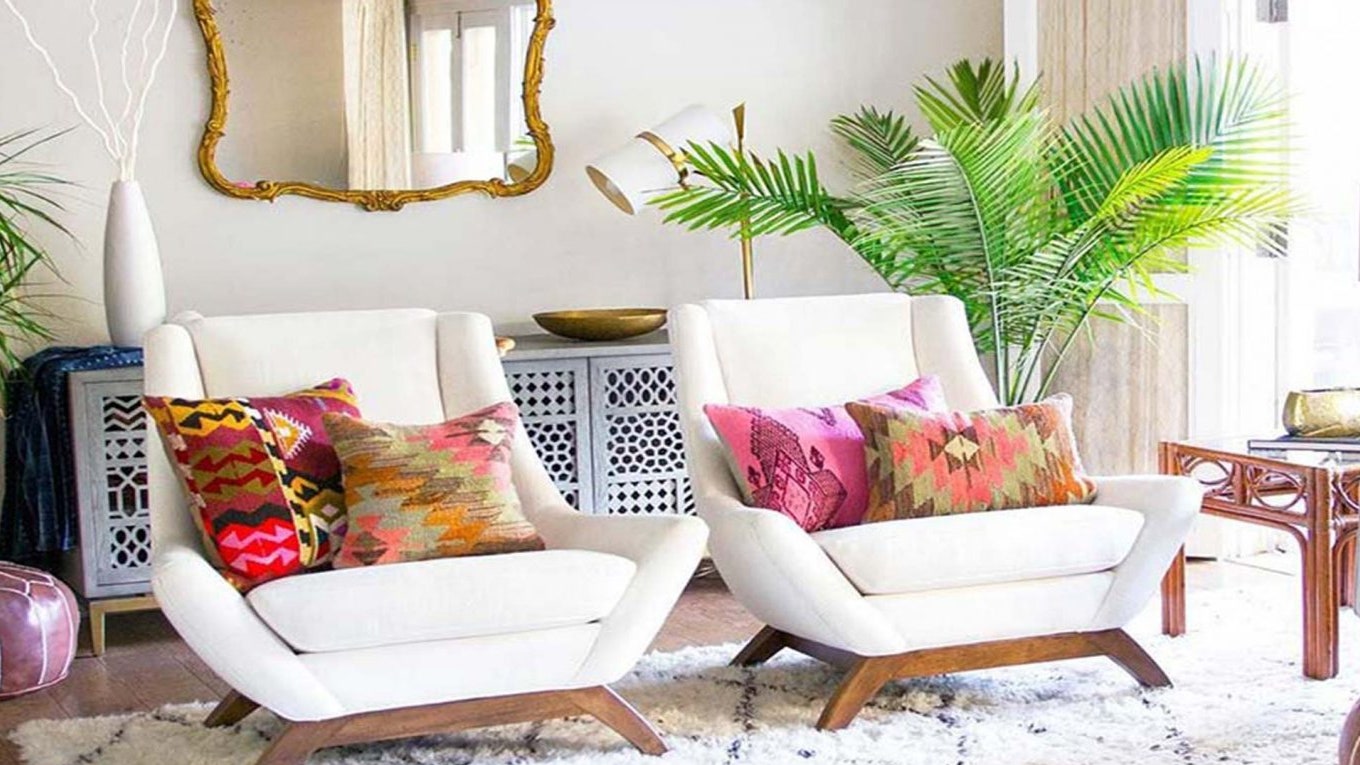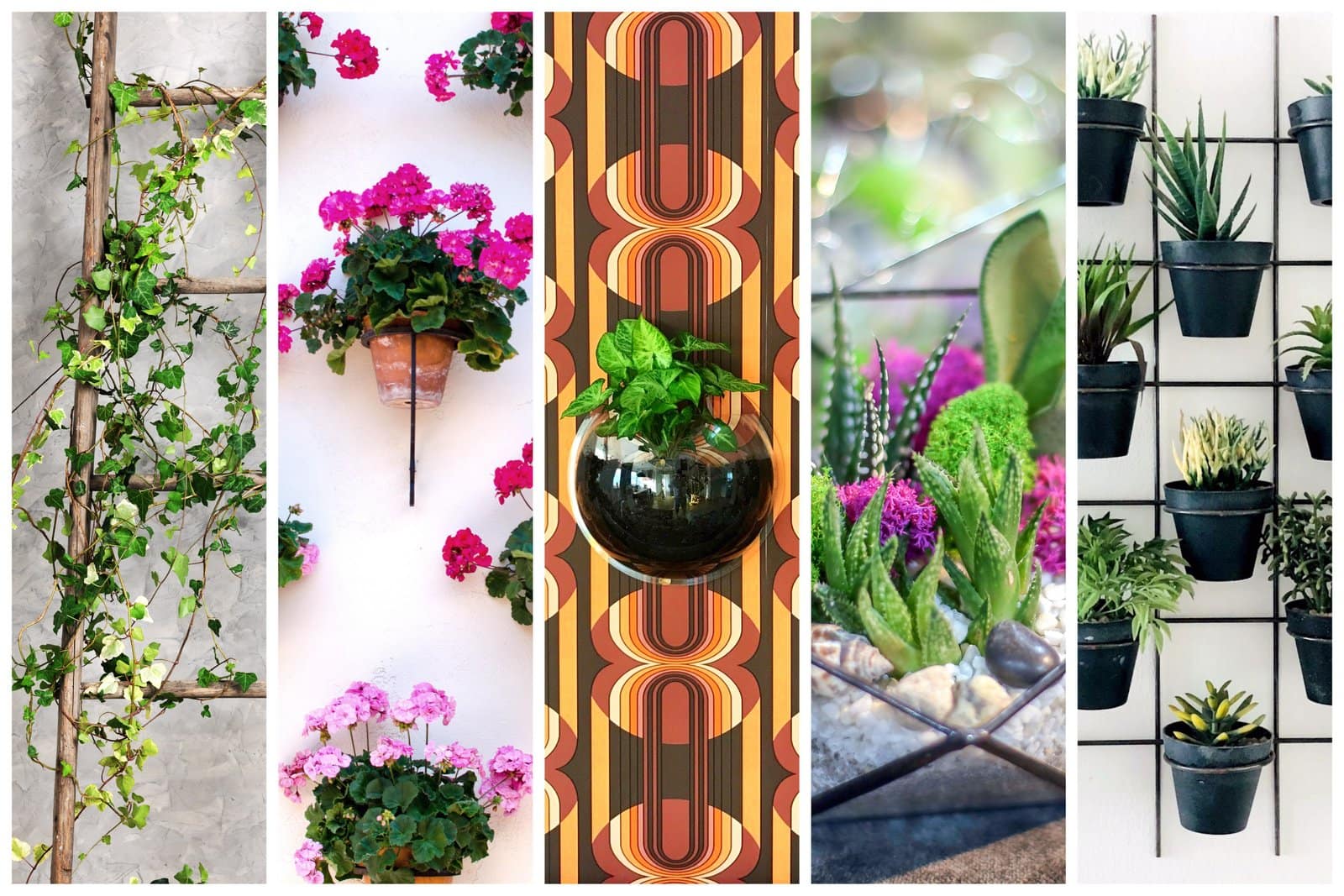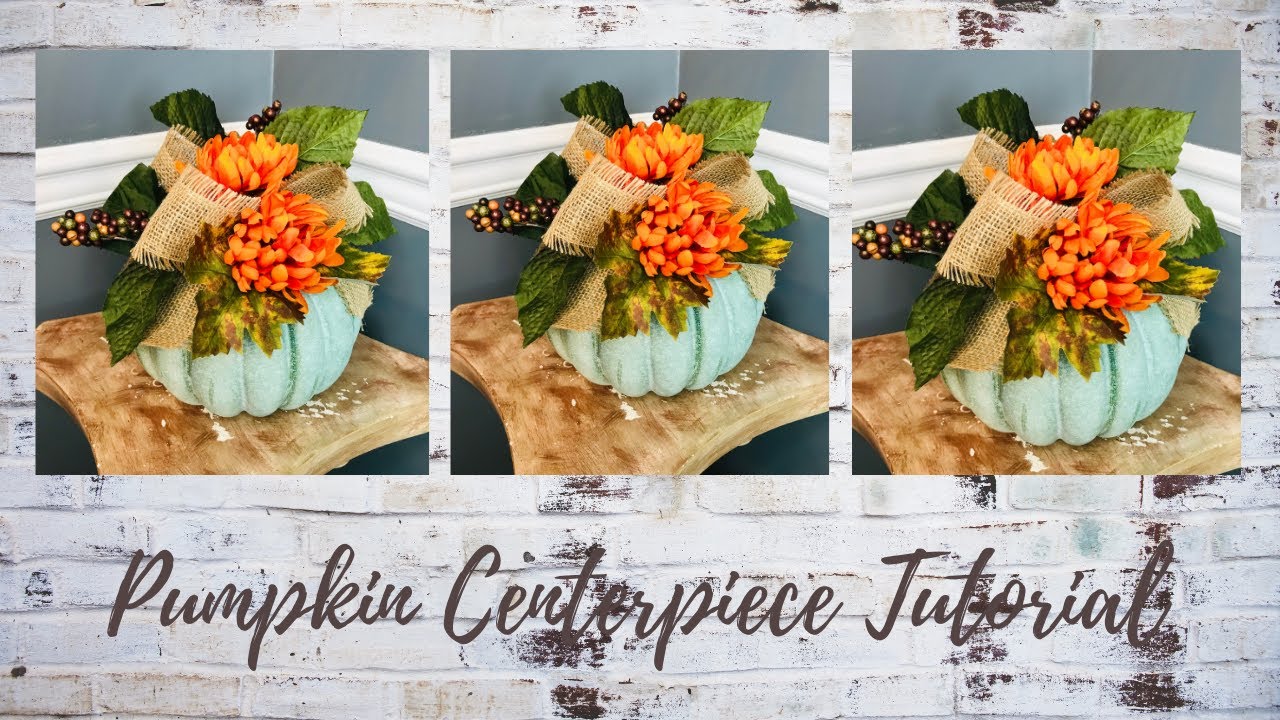Are you looking to add a touch of style and personality to your indoor plants? Look no further! With our collection of stylish decorative pots, you can elevate your plant game and transform your space into a lush oasis. From vibrant patterns to elegant designs, our pots are not just functional but also serve as beautiful art pieces. Whether you have succulents, ferns, or flowering plants, our range of decorative pots will enhance their natural beauty and add a pop of color to your home. Say goodbye to plain and boring plant holders and give your indoor plants the stylish home they deserve.
Types of Decorative Pots for Indoor Plants
Decorative pots for indoor plants come in a wide variety of materials, styles, and designs. Choosing the right type of pot can not only enhance the beauty of your indoor plants but also complement the overall aesthetics of your home. Here are some popular types of decorative pots to consider:
Ceramic Pots
Ceramic pots are a classic choice for indoor plants. They are available in a range of colors and designs, from sleek and modern to intricate and hand-painted. Ceramic pots are known for their durability and ability to retain moisture, making them ideal for plants that require consistent watering.
Terracotta Pots
Terracotta pots are made from clay that has been fired at a high temperature. These pots have a rustic and earthy appeal, and their porous nature allows for better aeration and drainage. Terracotta pots are especially suitable for plants that prefer drier soil conditions, as they help prevent waterlogging.
Metal Pots
Metal pots, such as those made from brass, copper, or stainless steel, add a touch of elegance and sophistication to indoor plants. They are often sleek and modern in design, making them perfect for contemporary interiors. Metal pots are durable, long-lasting, and can withstand various weather conditions.
Glass Pots
Glass pots offer a unique and transparent look, allowing you to showcase the intricate root systems of your plants. They come in various shapes and sizes, from traditional cylindrical pots to geometric terrariums. Glass pots are best suited for plants that thrive in moist environments, as they tend to retain more humidity.
Concrete Pots
Concrete pots are gaining popularity for their minimalist and industrial aesthetic. These pots have a sturdy and durable construction, ensuring longevity. Concrete pots can withstand harsh weather conditions and are known for their excellent drainage properties.
Resin Pots
Resin pots are a lightweight and affordable option for indoor plants. They are available in a wide range of colors and designs, including those that mimic the appearance of other materials like terracotta or concrete. Resin pots are easy to move around and often come with built-in drainage holes.
Plastic Pots
Plastic pots are a versatile and budget-friendly choice for indoor plants. They are available in an array of colors and sizes, making it easy to find a pot that matches your decor. Plastic pots are lightweight, easy to clean, and often come with drainage holes. However, they may not offer as much breathability for the plants compared to other materials.
Hanging Pots
Hanging pots are a great way to add greenery to your indoor space while saving valuable floor or table space. These pots can be suspended from the ceiling or mounted on walls. Hanging pots come in various materials, such as ceramic, terracotta, or macrame. They add a unique and visually appealing element to any room.
Self-Watering Pots
Self-watering pots are designed to provide a consistent water supply to your plants, reducing the risk of overwatering or underwatering. These pots typically have a reservoir at the bottom that holds water, which is absorbed by the plant’s roots as needed. Self-watering pots are convenient for busy individuals or those who may forget to water their plants regularly.
Tiered Pots
Tiered pots are a creative way to display multiple plants in one arrangement. They feature multiple levels or tiers, allowing you to showcase different plant varieties or create a cascading effect. Tiered pots can be made from various materials, such as ceramic or metal, and come in different sizes and designs.

This image is property of Amazon.com.
Considerations when Choosing Decorative Pots
When selecting decorative pots for your indoor plants, there are several factors to consider. These factors can greatly impact the health and growth of your plants, as well as the overall visual appeal of your space. Here are some key considerations to keep in mind:
Size
Choosing the right size of pot is essential for the well-being of your plants. A pot that is too small may restrict root growth, while a pot that is too large can lead to overwatering and poor drainage. Consider the mature size of your plant and choose a pot that allows for adequate space for the roots to grow.
Drainage
Proper drainage is crucial for preventing root rot and waterlogged soil. Look for pots with drainage holes at the bottom, which allow excess water to escape. If you fall in love with a pot that doesn’t have drainage holes, consider adding a layer of gravel or using a liner to create a drainage system.
Material
Different plant species have varying moisture requirements, and choosing the right pot material is crucial for providing the ideal growing conditions. Porous materials like terracotta or unglazed clay offer better aeration and drainage for plants that prefer drier soil, while materials like ceramic or glass retain more moisture for plants that thrive in humid environments.
Style
Consider the overall style and aesthetics of your home when choosing decorative pots. Select pots that complement the existing decor, whether it’s sleek and modern, bohemian and eclectic, or minimalist and Scandinavian. The pot’s design and finish should harmonize with the room’s overall ambiance.
Color
The color of the pot can greatly impact the visual impact of your plants. You can choose pots that blend in with the surroundings to create a seamless look or opt for contrasting colors to make your plants stand out. Consider the color of the foliage and flowers of your plants when selecting pots to create a cohesive and visually appealing display.
Plant Type
Different plants have varying care requirements, and it’s important to choose a pot that suits the specific needs of your plant. Consider factors such as the type of plant, its growth habits, and its moisture requirements. Some plants prefer drier soil and require pots with better drainage, while others thrive in more humid conditions and prefer pots that retain moisture.
Maintenance
Consider the level of maintenance you are willing to commit to. Some pots may require more frequent cleaning or special care, while others are low-maintenance. Take into account your lifestyle and schedule when choosing pots, especially if you have limited time to dedicate to plant care.
Budget
The cost of decorative pots can vary greatly depending on the material, design, and brand. Set a budget for your pot purchases and assess your options within that range. Remember that investing in high-quality pots can be beneficial in the long run, as they tend to be more durable and can withstand different weather conditions.
Location
Consider the location where your plants will be placed. If the pots will be exposed to direct sunlight, choose materials like plastic or metal that can withstand UV rays without fading or deteriorating. For areas with limited natural light, consider pots that are more reflective or have lighter colors to help maximize the available light.
Personal Preference
Ultimately, your personal preference should play a significant role in choosing decorative pots. Select pots that you genuinely love and that make you excited to care for your plants. Pots that bring you joy and enhance your overall well-being will create a more enjoyable indoor plant experience.
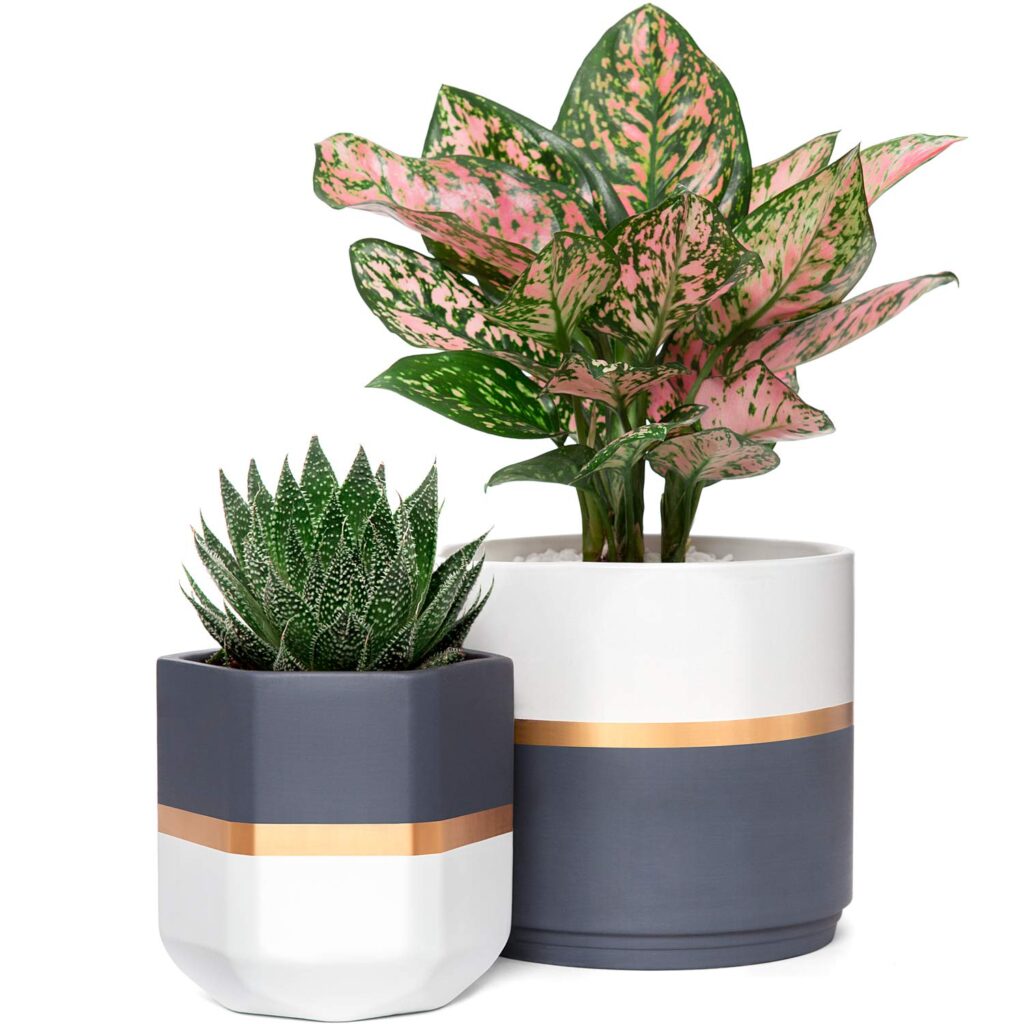
This image is property of Amazon.com.
Tips for Using Decorative Pots Successfully
Once you have selected the perfect decorative pots for your indoor plants, here are some tips to help you make the most of their visual appeal and optimize the health and growth of your plants:
Choose the Right Size
Ensure that the size of your pot is appropriate for the plant’s current and future growth. Overcrowding the roots can lead to poor growth and nutrient deficiencies, while an excessively large pot can cause overwatering and root rot. Research the specific growth habits of your plant species and choose a pot size accordingly.
Check for Drainage Holes
Before planting your indoor plants, check that the pot has adequate drainage holes at the bottom. Good drainage is essential to prevent water from accumulating in the soil and causing root rot. If your pot does not have drainage holes, consider drilling or creating them yourself, or use a liner or gravel layer to facilitate drainage.
Match the Material to the Plant’s Needs
Different plants have varying moisture requirements, and choosing the right pot material can help create the optimal growing conditions. Porous materials like terracotta or unglazed clay are suitable for plants that prefer drier soil, as they allow excess water to evaporate. For plants that thrive in more humid environments, consider materials like ceramic or glass that can retain moisture.
Coordinate with the Room’s Style
Choose pots that complement the overall style and aesthetics of the room. Consider the existing decor, color scheme, and ambiance when selecting pots. Harmonize the pot’s design, finish, and color with the room’s theme to create a cohesive and visually appealing display.
Use Color to Enhance or Contrast
Experiment with the color of the pots to create different effects. Choose pots in colors that complement the foliage or flowers of your plants to create a harmonious look. Alternatively, use pots in contrasting colors to make your plants stand out and add a pop of visual interest to your space.
Consider the Plant’s Growth
Keep in mind that plants grow and may require repotting or a larger pot over time. Consider the growth rate of your plant species and choose a pot that allows room for the roots to expand. This will help avoid the stress caused by frequent repotting and ensure the plant’s overall health and vitality.
Regularly Clean and Maintain the Pot
Maintain the cleanliness of your decorative pots by regularly removing dust and debris. Clean the pots with mild soap and water, or use a specialized cleaning solution depending on the pot’s material. This will help prevent the accumulation of pests, residue, or water stains that can detract from the overall appearance.
Mix and Match Different Styles
Get creative and mix different pot styles within your indoor plant collection. Combining different shapes, materials, and designs can add visual interest and create a unique display. Experiment with contrasting or complementary styles to showcase your personal taste and create a one-of-a-kind botanical arrangement.
Create Groupings or Arrangements
Instead of placing your plants individually, consider creating groupings or arrangements of pots. This can add depth and dimension to your indoor space, as well as create a visually cohesive display. Arrange pots of varying heights, sizes, and plant types to create an eye-catching focal point.
Experiment with Different Locations
Don’t be afraid to move your pots around and experiment with different locations within your home. Different lighting conditions and room temperatures can affect the growth and well-being of your plants. Observe how your plants respond to different environments and find the ideal spot where they thrive.
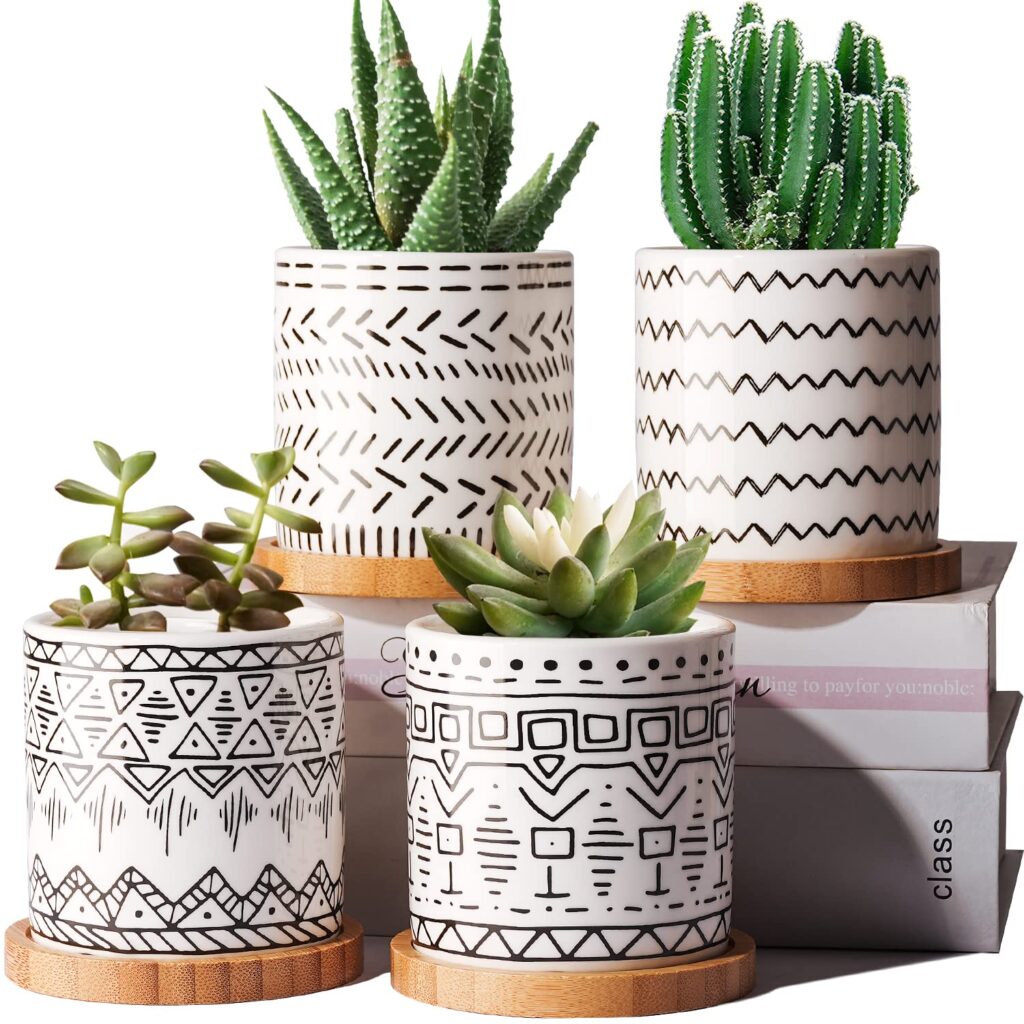
This image is property of Amazon.com.
Popular Design Trends in Decorative Pots
The world of decorative pots is constantly evolving, and various design trends emerge each year. Here are some popular design trends to consider when selecting pots for your indoor plants:
Minimalist and Scandinavian Designs
Minimalism and Scandinavian design are known for their clean lines, simplicity, and functionality. Choose pots with sleek and understated designs, often in neutral colors or earth tones. These pots create a sense of calm and balance and are perfect for modern or minimalist interiors.
Geometric Shapes and Patterns
Geometric pots add a bold and contemporary touch to your indoor plant collection. Opt for pots with angular edges, unique shapes, or geometric patterns. These pots can act as statement pieces and bring a modern and edgy vibe to your home.
Botanical and Floral Motifs
Embrace nature-inspired designs with pots that feature botanical or floral motifs. Look for pots with hand-painted leaves, flowers, or vines. These pots can lend a touch of elegance and whimsy to your indoor plants, creating a connection between the natural world and your home.
Bohemian and Eclectic Styles
Bohemian and eclectic styles embrace a mix of colors, patterns, and textures. Choose pots with vibrant hues, intricate patterns, or tassel embellishments. These pots create a bohemian and free-spirited atmosphere, adding a lively and artistic element to your plant display.
Metallic Finishes and Accents
Metallic finishes and accents are a popular choice for adding a touch of luxury and glamour to your indoor plants. Opt for pots with gold, silver, or bronze finishes, or choose pots with metallic accents like handles or rims. These pots can create a striking and opulent look in your space.
Handmade and Artisanal Pots
Handmade and artisanal pots bring a sense of craftsmanship and uniqueness to your indoor plant collection. Look for pots that are handmade by local artisans or feature intricate hand-painted designs. These pots not only support local creators but also add a personal touch and bring a sense of story and culture to your home.
Vintage and Retro Inspired Designs
Vintage and retro-inspired pots are perfect for adding a nostalgic and timeless feel to your space. Look for pots with retro patterns, colors, or shapes reminiscent of past eras. These pots can be charming focal points and evoke a sense of nostalgia and sentimentality.
Abstract and Contemporary Art Pots
For a bold and artistic statement, consider pots with abstract or contemporary art-inspired designs. Look for pots that resemble sculptures or feature splashes of vibrant colors. These pots can act as works of art in themselves and create a visually striking display.
Nature-Inspired Textures and Materials
Nature-inspired textures and materials add an organic and tactile element to your indoor plants. Choose pots that feature textured surfaces, like those resembling tree bark or stones. Opt for materials like rattan, jute, or bamboo to bring a touch of nature into your home.
Multi-functional and Innovative Pot Designs
Innovative and multi-functional pot designs offer practical benefits while still being visually appealing. Look for pots with built-in drainage systems, self-watering capabilities, or plant stands that double as storage units. These pots can help simplify plant care while adding a modern and functional element to your decor.
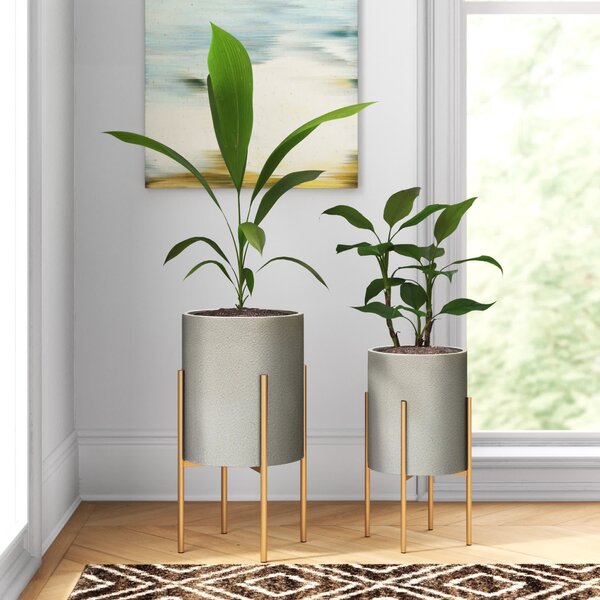
This image is property of assets.wfcdn.com.
DIY Ideas to Decorate Decorative Pots
If you want to personalize your decorative pots and add a unique touch to your indoor plant display, here are some DIY ideas to consider:
Paint and Stencil Designs
Get creative with paint and stencils to add artistic patterns or designs to your pots. Choose acrylic or outdoor-grade paint in colors that complement your plant or decor. Use stencils or freehand painting techniques to create geometric shapes, botanical motifs, or abstract designs.
Decoupage with Paper or Fabric
Decoupage is a technique where paper or fabric is adhered to the surface of an object using glue or mod podge. Consider decoupaging your pots with decorative paper or fabric to add texture and visual interest. Choose patterns like floral prints, vintage postcards, or newspaper clippings to create a unique and personal touch.
Add Embellishments and Trinkets
Personalize your pots with decorative embellishments and trinkets. Glue on beads, seashells, buttons, or miniature figurines to add charm and personality. Arrange the embellishments to create patterns or scenes that reflect your personal style or interests.
Use Decals or Vinyl Stickers
Decals and vinyl stickers offer an easy and mess-free way to decorate your pots. Choose stickers with patterns, quotes, or images that resonate with you. Apply the stickers to clean and dry pots, ensuring they adhere properly. This simple technique can instantly transform the look of your pots.
Wrap with Twine or Ribbon
Give your pots a rustic or bohemian touch by wrapping them with twine or ribbon. Start at the top and wrap the twine or ribbon in a spiral pattern, securing it in place with glue. You can wrap the entire pot or create unique patterns by crisscrossing the twine or ribbon. Experiment with different textures and colors for a personalized look.
Ombre or Gradient Effects
Create a stunning ombre or gradient effect on your pots using paint or dye. Start with a base color and gradually blend in lighter or darker shades to create a seamless transition. This technique adds depth and visual interest to your pots and can be achieved using a sponge, brush, or spray bottle.
Create a Mosaic with Broken Tiles
Transform a plain pot into a work of art by creating a mosaic using broken tiles. Break ceramic or glass tiles into smaller pieces and arrange them in a pattern or design of your choice. Adhere the pieces to the pot using tile adhesive or grout, and finish with a sealant to protect the mosaic.
Experiment with Dip-Dye Techniques
Dip-dyeing is a trendy technique that involves partially immersing the pot in paint or dye to create a gradient effect. Choose a pot with a porous material like terracotta or unglazed ceramic for the best results. Dip the pot in a container filled with paint or dye, allowing the liquid to soak up gradually. This technique creates a visually striking and unique look.
Apply Gold Leaf or Metallic Foil
Add a touch of elegance and glamour to your pots by applying gold leaf or metallic foil. Apply adhesive to the pot’s surface, and carefully place the gold leaf or metallic foil on top. Gently press and smooth out any wrinkles or air bubbles. The result is a luxurious and shimmering pot that can elevate the overall aesthetics of your indoor plant display.
Customized Pot Covers
If you prefer to keep your pots as they are, consider creating custom pot covers instead. Use fabric, burlap, or decorative paper to create covers that fit snugly over your pots. Embellish the covers with ribbons, buttons, or bows to add a personalized touch. This allows you to change the look of your pots easily and update the decor whenever you desire.
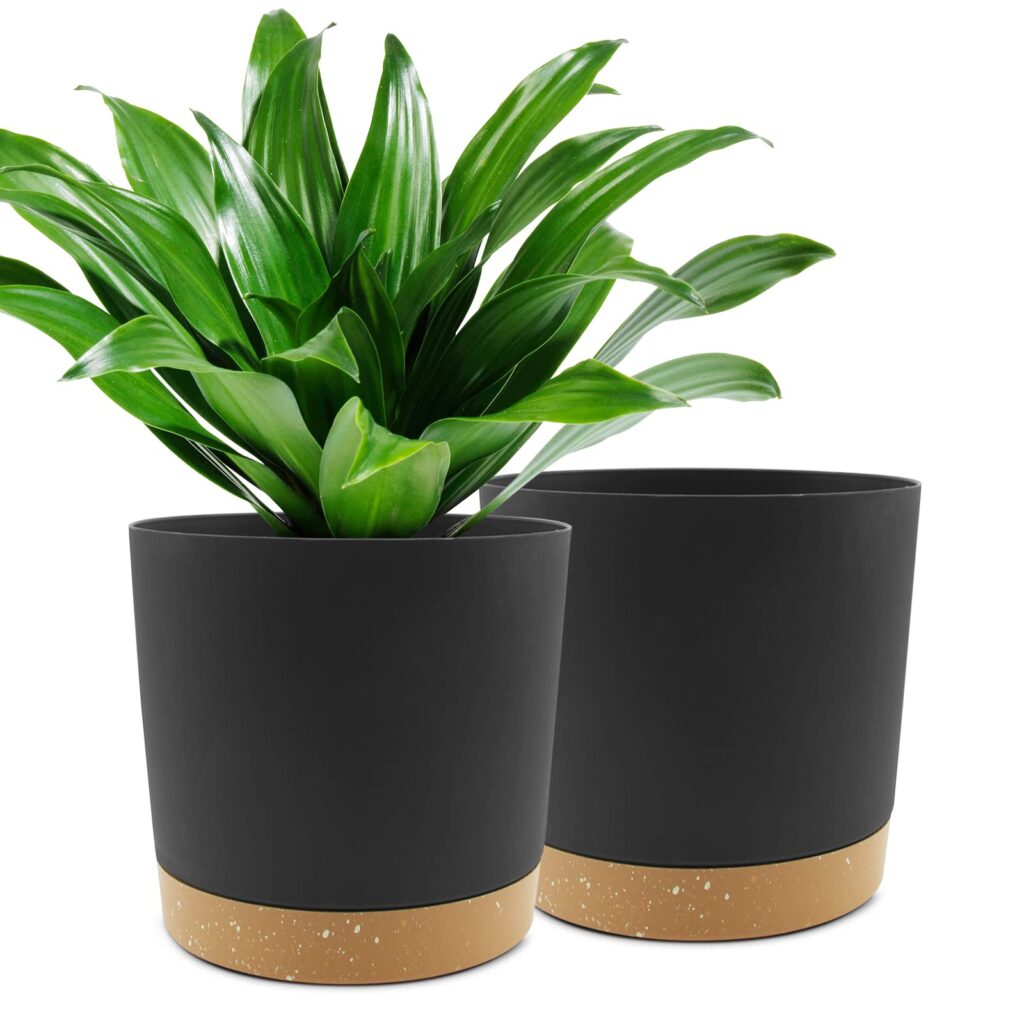
This image is property of Amazon.com.
Care and Maintenance for Decorative Pots
Proper care and maintenance of your decorative pots are essential for their longevity as well as the health and well-being of your indoor plants. Here are some tips to help you keep your pots looking their best:
Cleaning and Dusting
Regularly clean your pots to remove dust, dirt, and residue that may accumulate over time. Use mild soap and water, or a specialized pot cleaner, depending on the material of your pot. Gently scrub with a soft brush or sponge, rinse thoroughly, and allow the pots to dry completely before using them again.
Preventing Water Stains and Damage
To prevent unsightly water stains and damage to your pots, use a saucer or tray underneath to catch excess water. Empty the saucer regularly to avoid waterlogging and ensure proper drainage. You can also place a layer of small pebbles or gravel at the bottom of the pot to create an air gap and prevent water from sitting directly on the roots.
Avoiding Overwatering or Underwatering
Overwatering or underwatering can both negatively impact the health of your plants. Follow the specific watering requirements of each plant species and monitor the moisture levels of the soil. Ensure proper drainage by using pots with drainage holes and avoid letting water sit in the saucer for extended periods.
Repotting and Transplanting
As your plants grow, they may require repotting or transplanting into larger pots. Monitor the root growth and check if the plant is becoming root-bound. If the roots are starting to circle around the bottom of the pot, it’s time to repot. Transplanting is also necessary if the plant outgrows its current pot or if the soil becomes too compacted.
Protecting against Scratches and Chips
To prevent scratches and chips on your decorative pots, avoid dragging them across rough surfaces or placing them directly on hard countertops. Use furniture protectors or felt pads under the pots to avoid scratches and protect delicate surfaces. Be mindful when moving or rearranging pots to ensure their longevity.
Dealing with Pest Infestations
Pest infestations can quickly disrupt the health of your indoor plants. Monitor your plants regularly for signs of pests such as aphids, spider mites, or mealybugs. If you notice any pests, take immediate action. Remove the affected plant from other plants to avoid spreading the infestation and treat the pests with appropriate insecticides or natural remedies.
Seasonal Care and Storage
Different seasons may require varying care for your plants and pots. During the colder months, protect your pots from freezing temperatures by moving them indoors or providing them with insulation. In hotter months, provide shade or move the pots to a cooler spot to prevent overheating and excessive evaporation. Store pots properly during off-seasons to prevent damage and prolong their lifespan.
Reviving and Refreshing the Pot’s Appearance
Over time, decorative pots may become worn, faded, or lose their original luster. To revive and refresh their appearance, clean them thoroughly and consider applying a protective or restorative coating. This can help restore the shine and color of the pot, making it look as good as new.
Recycling or Upcycling Old Pots
If you have old or damaged pots that can no longer be used, consider recycling or upcycling them instead of throwing them away. Use broken pieces to create a mosaic or repurpose pots as decorative containers for other household items. Get creative and give your old pots a new lease on life.
Professional Restoration and Refinishing
For valuable or sentimental pots that require extensive restoration, consider consulting a professional. There are experts who specialize in pot refinishing, repair, or restoration. They can help bring damaged or tired pots back to their former glory and ensure their longevity.
Taking care of your decorative pots is just as important as caring for your plants. By following these care and maintenance tips, you can ensure that your pots remain beautiful and functional, allowing your indoor plants to thrive in style.


